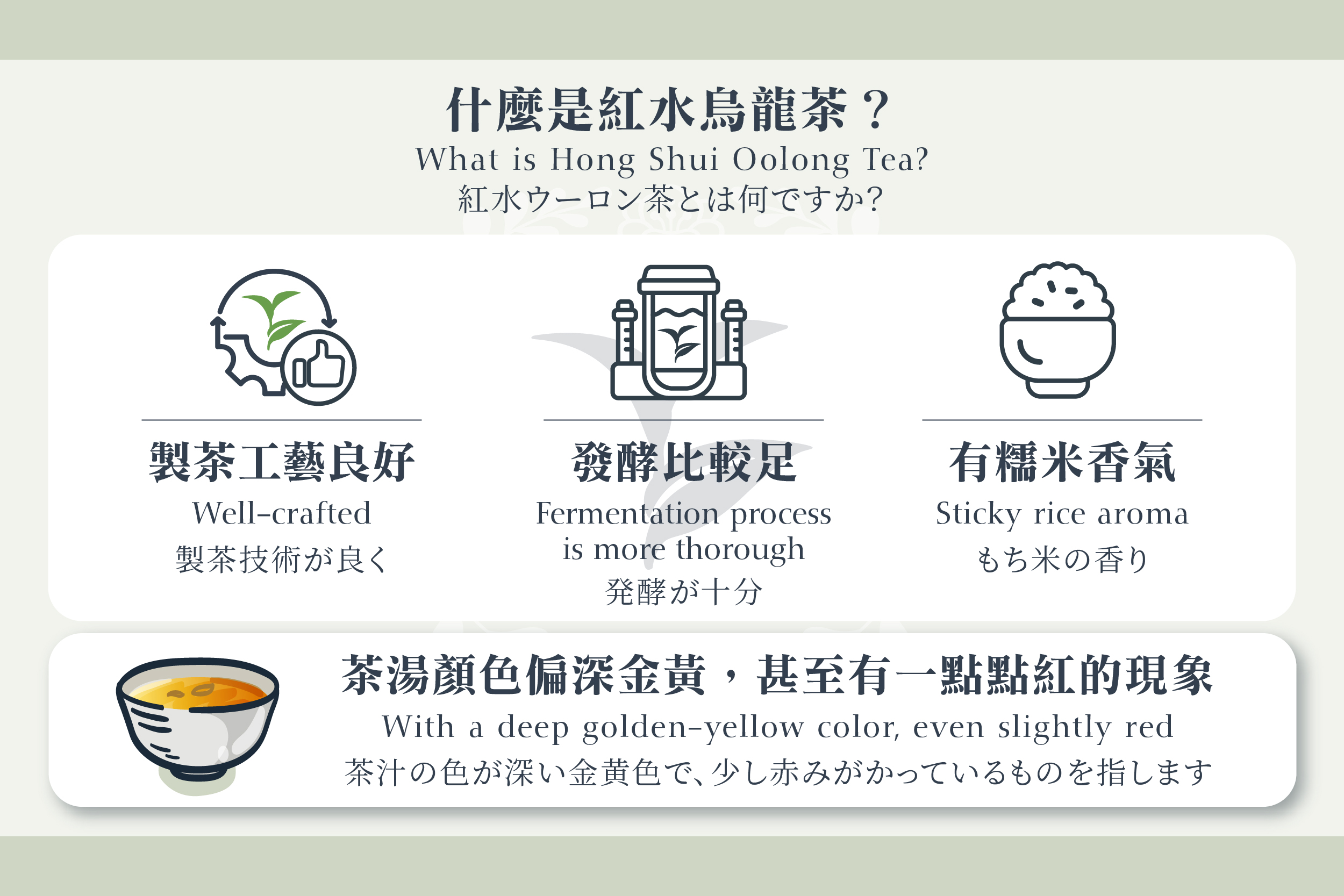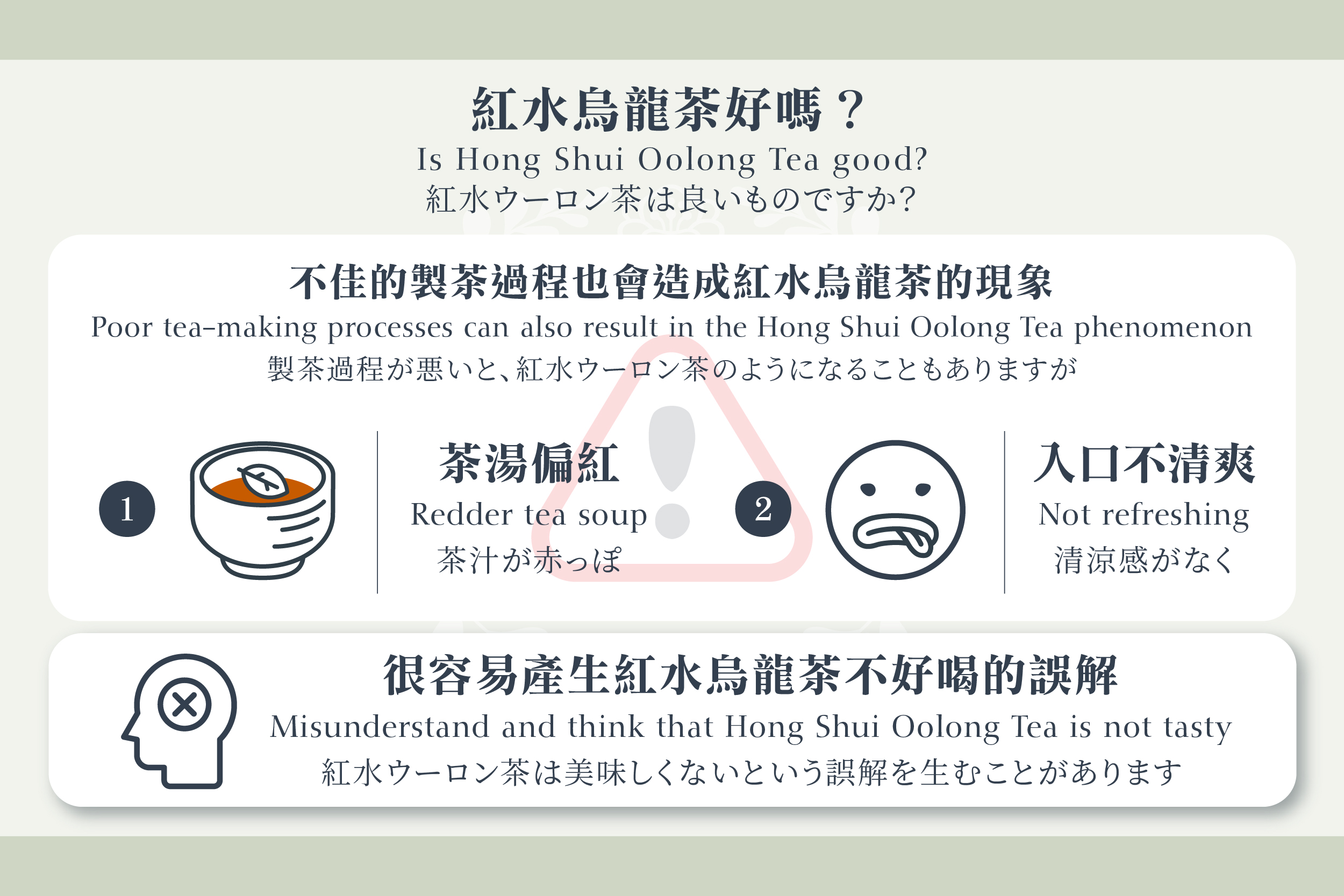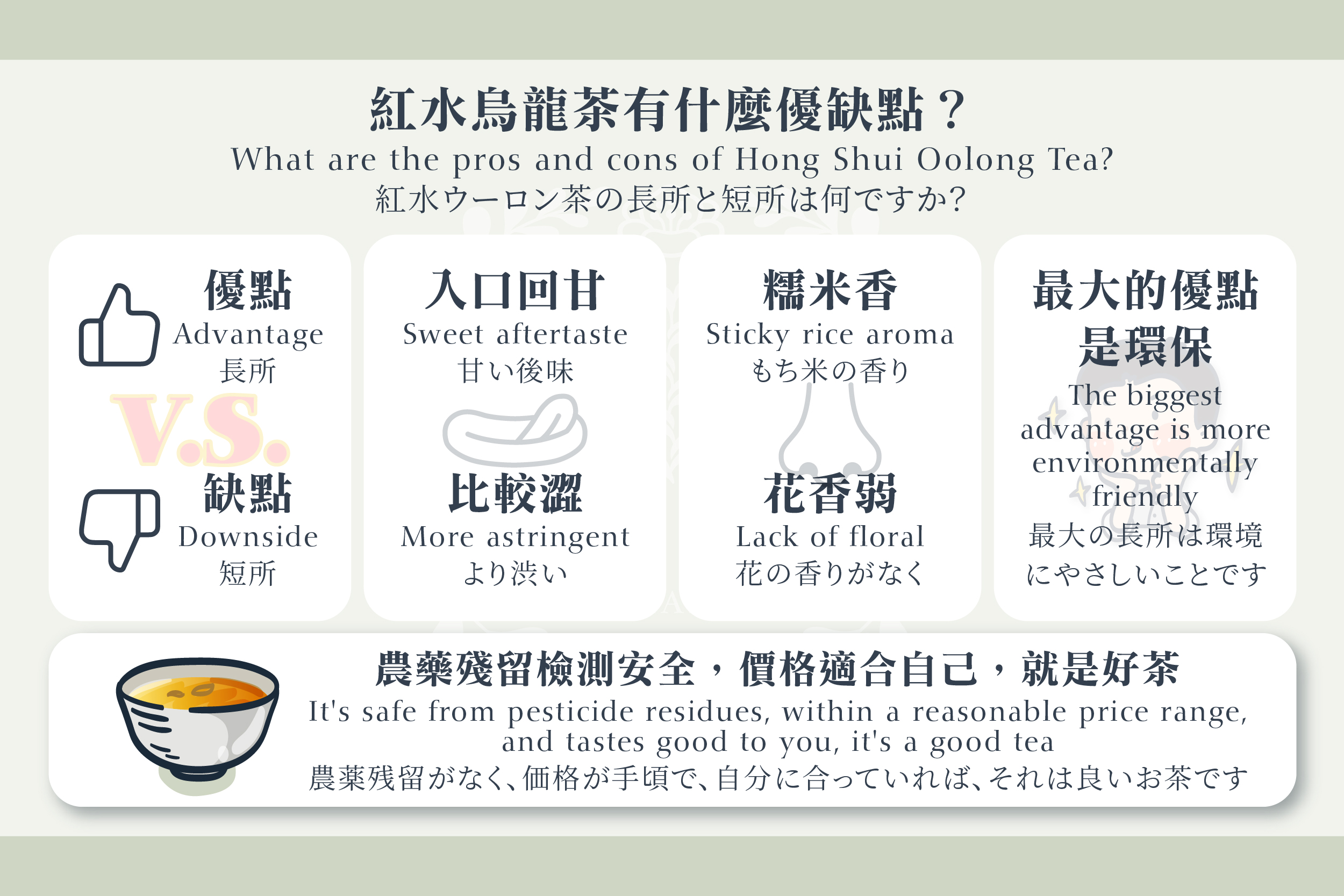Hello everyone,
I am Andy, a tea enthusiast.
Many friends often tell me that the "Hong Shui Oolong Tea" from the past was more delicious, but now it seems hard to find.
Why is that?
-What is Hong Shui Oolong Tea?
Hong Shui Oolong Tea is a type of Oolong tea with a deep golden-yellow color, even slightly red. Some say that the green leaves of the tea with red edges are also a characteristic of Hong Shui Oolong Tea. Simply put, Hong Shui Oolong Tea is well-crafted, and its fermentation(oxidation) process is more thorough, resulting in a smooth taste, even with a hint of sticky rice aroma.
-Is Hong Shui Oolong Tea good?
Whether a tea is good or not depends on personal taste. Poor tea-making processes can also result in the Hong Shui Oolong Tea phenomenon, like a redder tea soup. When such tea is tasted, it's not refreshing, indicating a counterfeit Hong Shui Oolong Tea. When consumers can't discern, it's easy to misunderstand and think that Hong Shui Oolong Tea is not tasty. A good Hong Shui Oolong Tea should taste sweet upon entering the mouth, refreshing, a bit astringent, and have a sticky rice aroma.
-How did Hong Shui Oolong Tea come about?
Compared to regular Oolong tea, Hong Shui Oolong Tea is more fermented(oxidated), resulting in a darker tea color. This is because, in the early days of tea-making, it was hard to control the temperature. When temperatures were high, tea leaves fermented(oxidated) too quickly. Combined with a lack of manpower, it was common to produce Hong Shui Oolong Tea.
Dong Ding Mountain, with its highest altitude of 700 meters, compared to mountains over 1000 meters, has relatively lower temperatures, making it the main production area for Hong Shui Oolong Tea.
Note: The higher the temperature, the faster the fermentation(oxidation) of the tea leaves.
-Why can't we find good Hong Shui Oolong Tea now?
In the past, due to the lack of environmental temperature control equipment, the fermentation(oxidation) speed was left to the tea leaves' natural process. With the advancement of equipment, environmental temperature and humidity control devices are easily accessible. Controlled fermentation(oxidation) speeds, under good environmental conditions, are beneficial for enhancing tea quality and production efficiency.
-What are the pros and cons of Hong Shui Oolong Tea?
The advantage of Hong Shui Oolong Tea is its sweet aftertaste, slight sugary sweetness, and a hint of sticky rice aroma. The downside is the lack of a distinct floral scent and it's more astringent. Apart from the flavor, the biggest advantage of Hong Shui Oolong Tea is that it's more environmentally friendly. Since the tea leaves are sufficiently fermented(oxidated), they only need moisture protection, not vacuum packing, making them less likely to spoil.
No matter the tea, if it's safe from pesticide residues, within a reasonable price range, and tastes good to you, it's a good tea.
That's all for today's share. See you next time.
#yoshantea #taiwantea #dongdingtea #oolongtea #teafacotry #FSSC22000 #safetea #HongShuiOolongTea #TeaFermentation #Teaoxidation ##EcoFriendlyTea






